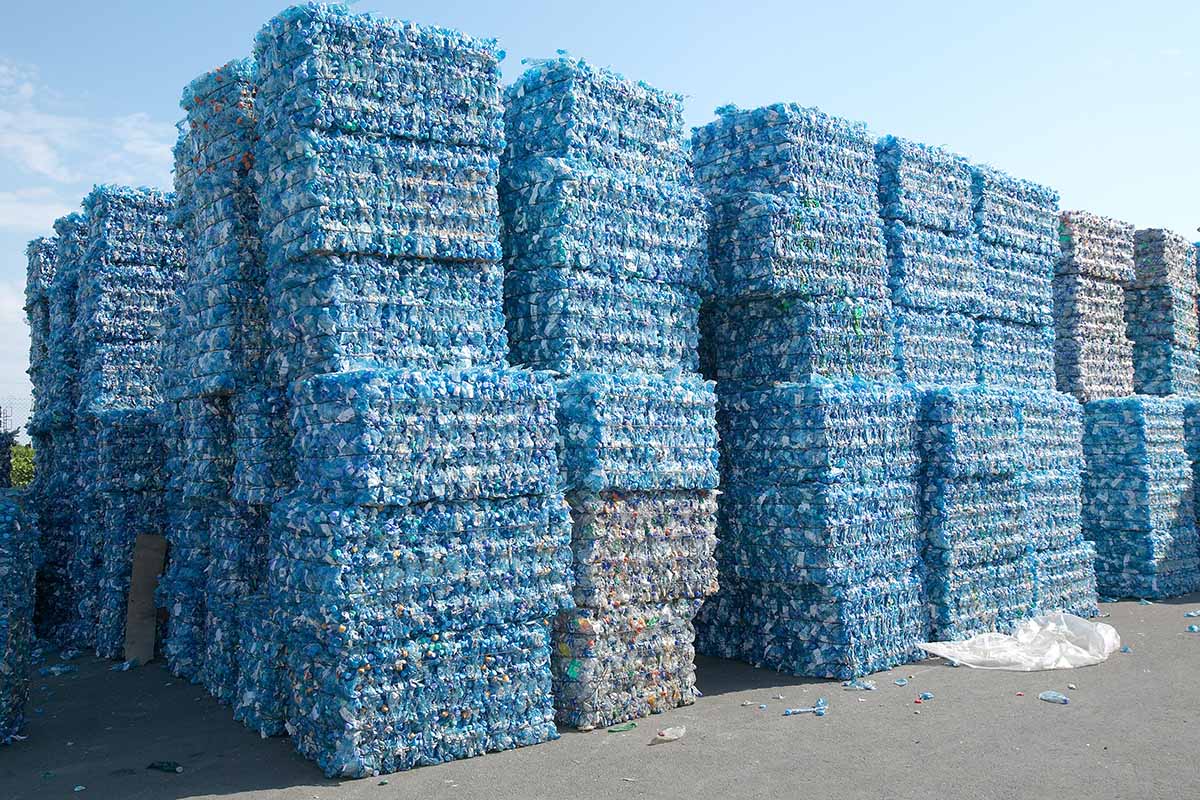
Research estimates that in 2020 in Europe, 2.4 million tons of PET was recycled into 1.7 million tons of flake. | Menzl Guenter/Shutterstock
The European PET market is making progress toward a circular industry but needs to improve collection rates, according to a new report.
A study of 2020 collection, recycling capacity and production showed that all three increased, with PET recycling capacity alone increasing 21% since 2018, to 2.8 million metric tons (all tons below are metric).
“The significant increase in PET collection and recycling sends a positive signal to the market and will boost confidence in further accelerating PET’s circularity,” the report said.
The study, the “PET Market In Europe: State Of Play 2022,” included the 27 European Union (EU) member states plus the U.K., Norway and Switzerland. It was put out by Natural Mineral Waters Europe, Plastics Recyclers Europe, UNESDA Soft Drinks Europe and Petcore Europe.
The report said net demand for PET in Europe was estimated at 5.1 million tons in 2020, of which 3 million tons was virgin PET, 1.3 million tons RPET and 0.8 million tons from imports (not specified whether virgin or recycled).
In 2020, 2.4 million tons of PET was recycled, which was turned into 1.7 million tons of flake. The report estimated that with improvements in the quantity and quality of PET collection and sorting, recyclers’ yields could increase from an average of 71% of input in 2020 to 80% by 2030, or 3.0 million tons of RPET.
Some remaining challenges are despite the increase in recycling capacity, it will need to increase by at least another third by 2029 to meet the 90% collection rate and the EU’s mandatory-recycled-content targets.
The demand for food-grade RPET for bottle production “exceeds supply and there will need to be an expansion in both recycling capacity of this grade and supply of sorted bottles of sufficient quality to feed this capacity,” the report found, and tray recycling capacity will also need to substantially expand.
And of the estimated 4.6 million tons of PET rigid packaging available for collection in 2020, only about 49% of it was recycled, including 61% of bottles and 21% of thermoforms.
Quality of the collected PET also varied “significantly” between member states, the report found, and “further improvements in design for recyclability practices are likely to be needed.”
The report also called for more robust data sources, innovation and support from policymakers.
More stories about PET
- Candy giant Mars reached 7% PCR use in 2024
- PET Recycling Coalition doubles down on thermoforms
- Bottle cap design: No need to ‘reinvent the wheel’